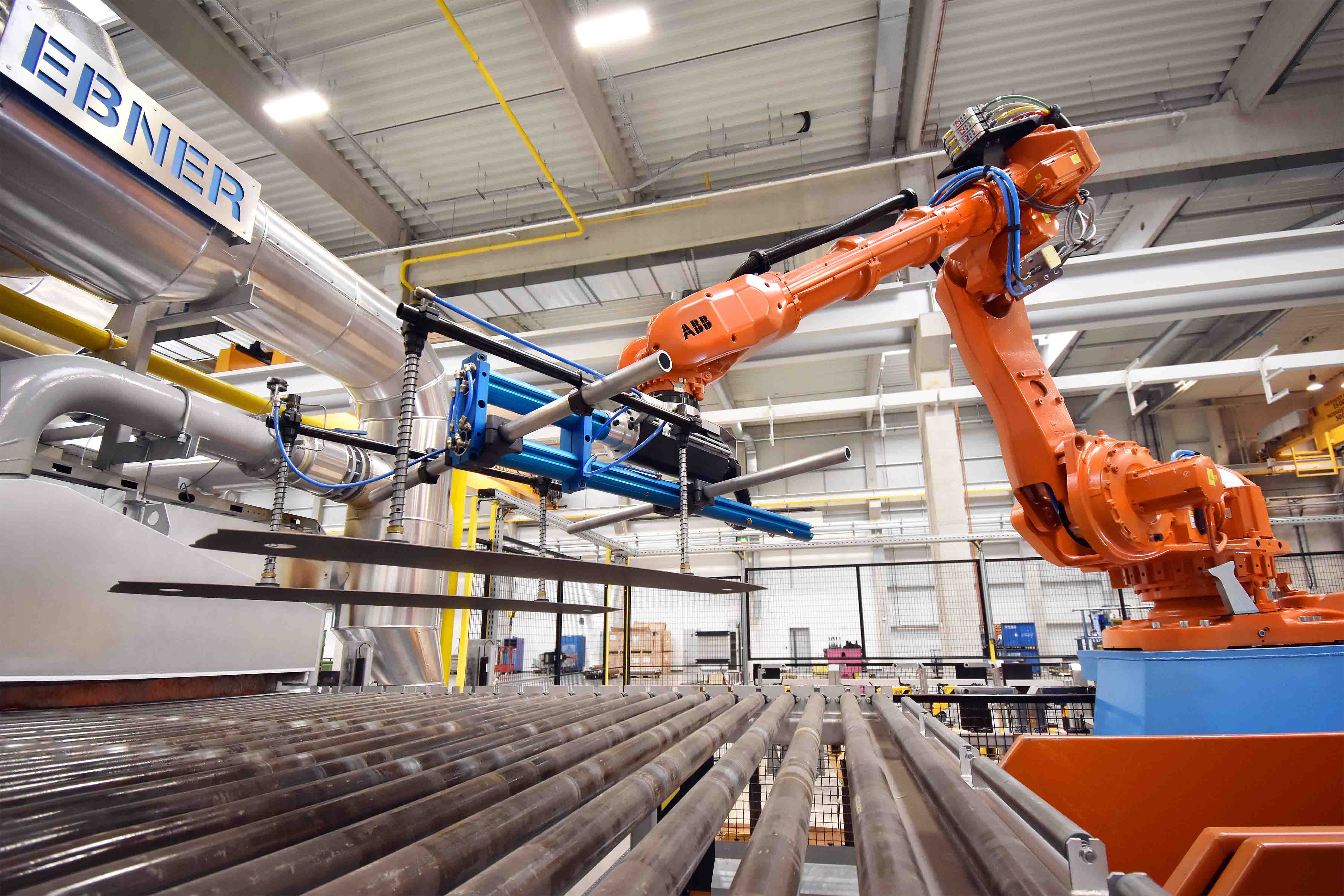The choice between cold and hot forming in series production is not primarily driven by physics or microstructure in industrial practice, but by the required component function, the cost sensitivity per piece, and the ability to validate the part within defined tolerances.
Physical and Material Science Fundamentals
Temperature and Recrystallization
Cold forming takes place at room temperature or without additional heating. The material remains below the recrystallization temperature. The increased strength results from strain hardening during deformation.
In hot forming, the material is first heated above the recrystallization temperature. Forming then occurs during cooling just below this temperature, allowing the material to recrystallize and remain highly formable. In industrial hot forming of press-hardenable steels, typical forming temperatures range from 800–930 °C. The subsequent rapid quenching produces martensite, which creates the high final strength.
Flow Behavior, Ductility, and Forming Resistance
In the cold state, the material is high-strength and stiff against deformation. Flow stress is higher, forming resistance increases, and springback is significant. Strain hardening effects locally increase strength but reduce ductility.
In the warm/hot state, forming resistance decreases. Elevated temperature increases ductility, enabling deeper draws and more complex shapes. Springback is lower. For press-hardened components, final strength is generated not through forming work but through thermally induced phase transformation.
Microstructural States and Stability
Cold-formed parts retain their strain-hardened microstructure. Hot-formed and press-hardened components exhibit defined martensitic or fine-grained structures shaped by the interplay of temperature profile and cooling rate.
Energy Demand, Process Control, and System-Level Effects
The distinction between cold and hot forming affects not only the material itself but also energy consumption, tool loading, and the complexity of peripheral processes.
Energy and Forming Force Requirements
Cold forming requires no thermal pre-treatment. Energy input is almost entirely mechanical through press forces and forming work. This often results in multi-stage forming sequences to distribute local strains appropriately.
Hot forming is energy-intensive: substantial heat input is necessary upfront, and significant forming forces are still required. As a result, furnaces, transfer systems, and robust process control are intrinsic elements of the production setup.
Tool Loading and Process Integrity
Cold forming tools face high contact pressures, abrasive wear, and potential galling. Tool life and coating strategies must be designed accordingly.
Hot forming tools are subjected to thermal cycling. They must withstand temperature fluctuations while maintaining tight tolerances (heating from the material, cooling through internal channels during press hardening). Tool material selection, coatings, cooling layout, and sealing concepts are key stability levers. In press hardening, controlled heat dissipation is essential because cooling rates determine martensitic phase formation.
Springback, Dimensional Accuracy, and Downstream Operations
Cold-formed components exhibit pronounced springback because of higher internal stresses. Compensation and iterative tool corrections are typically required.
Hot-formed components exhibit significantly less springback, as the material is formed within the ductility window and freezes into shape during quenching in the die. Dimensional accuracy is higher, reducing trimming and calibration efforts after forming.
Application Fields and Geometries
Component Types and Functional Requirements
Cold forming is used for thin-gauge sheet metal components in high-volume production when geometry can be achieved at high mechanical load without thermal conditioning. Typical examples include:
- Outer body panels
- Reinforcement plates
- Structural parts with moderate drawing depth
- Applications with manageable springback
- Scenarios with low thermal infrastructure and cycle-time-driven production
Hot forming is selected when lightweight design, crash performance, or geometric complexity exceed cold-forming limits. Typical automotive applications include:
- A-/B-pillar reinforcements
- Roof rails
- Rocker and bumper reinforcements
- Crash-relevant structures with defined energy-absorption behavior
- Areas requiring very high post-forming strength
Cost Considerations
There is no forming process that is universally cheaper—the cost differences depend on where the primary cost drivers sit within the process and how they shift with production strategy.
Cold Forming
- High mechanical forces → demanding tools
- Tool life and coating costs under abrasive/adhesive wear
- Potentially multi-stage process chains
- Compensation of springback through tool iterations
- Minimal thermal operating costs
Hot Forming
- Thermal infrastructure: furnaces, transfer systems, dwell times
- Integrated tool cooling for quenching
- Temperature-resistant tool materials
- High thermal energy consumption per cycle
- Reduced springback → lower downstream correction effort
Costs emerge from the interplay of batch size, part complexity, and validation requirements.
Decision Criteria in Industrial Practice
Series production requires balancing technical, economic, and infrastructure questions:
- What is the functional role of the component?
- What geometry and strength targets are required?
- Which equipment and tools are available?
- What are the production volumes?
- Where are the dominant cost levers—mechanical or thermal?
Ultimately, the forming process is chosen through a convergence of component function, available infrastructure, cost structure, material strategy, crash requirements and supply-chain risk.
The choice of forming method is therefore not a matter of belief, but a reconciliation of function, geometry, batch size, supply-chain costs, material strategy, and crash performance targets.
The final question is: What does the component require—and which forming process delivers the best solution for those requirements?
